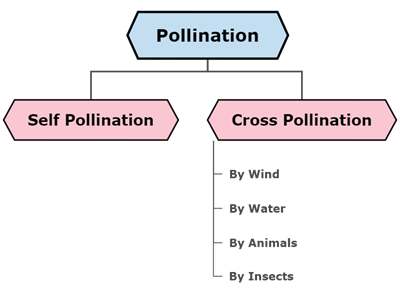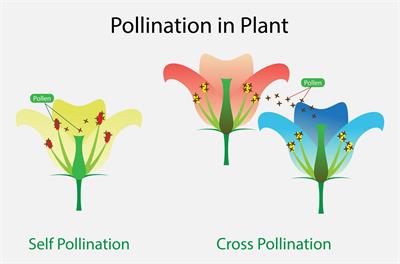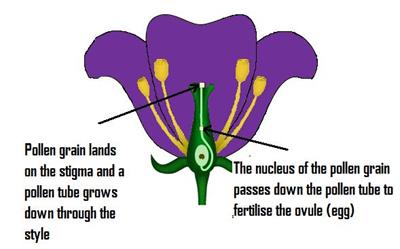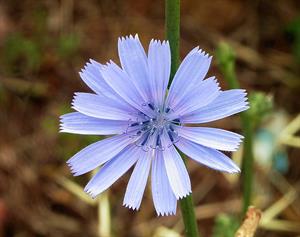
PUMPA - SMART LEARNING
எங்கள் ஆசிரியர்களுடன் 1-ஆன்-1 ஆலோசனை நேரத்தைப் பெறுங்கள். டாப்பர் ஆவதற்கு நாங்கள் பயிற்சி அளிப்போம்
Book Free DemoThe transfer of pollen grains from the anther of flower to the surface of the stigma of the same or another flower is called pollination.
Types of pollination:
Pollination is of two types. They are:
- Self-pollination
- Cross pollination


Types of pollination
What is self pollination?
The transfer of pollen grains from the anther to the stigma of the same flower or another flower on the same plant is known as self-pollination.
It is also known as autogamy and is seen in bisexual flowers (that contain both stamens and pistil) like Hibiscus.

Self pollination
The flowers involved in self-pollination should possess specific characteristic features such as homogamy or cleistogamy.
Homogamy:
It is a condition where the anther and the stigma of a bisexual flower reach their maturity together.

Homogamous flower
Example:
Wheat, rice, rice, Mirabilis.
The pollen grain are confined inside the flower, and they can pollinate the stigma of the same flower, cleistogamy is observed in non-opening flowers.

Cleistogamous flower
Underground flowers of Commelina benghalensis
Advantages of self pollination:
- In bisexual flowers, self-pollination is possible.
- It does not depend on the agents for pollination.
- Pollen grains are not wasted.
- Parental characteristics are maintained.
- Flowers are not attractive, because they are not depends on the insects to get pollinated.
- The production of seeds is ensured.
- The probability of failure is less.
Disadvantages of self-pollination:
- Less number of seeds are produced.
- Due to limited amount of endosperm, seeds produce weak plants.
- New varieties of plants cannot be produced.
- Genetic defects are carried forward to the offspring.
- Susceptibility to diseases increases.
- Quality of seeds produced may decrease from one generation to the next.
- Prolonged self-pollination can cause a reduction in the energy and vitality of a species.
Reference:
https://upload.wikimedia.org/wikipedia/commons/1/14/Self_polination.jpg
https://en.wikipedia.org/wiki/Commelina_benghalensis#/media/File:ARS_-_Commelina_benghalensis.jpg
https://en.wikipedia.org/wiki/Homogamy_(biology)#/media/File:Cichorium_intybus-alvesgaspar1.jpg